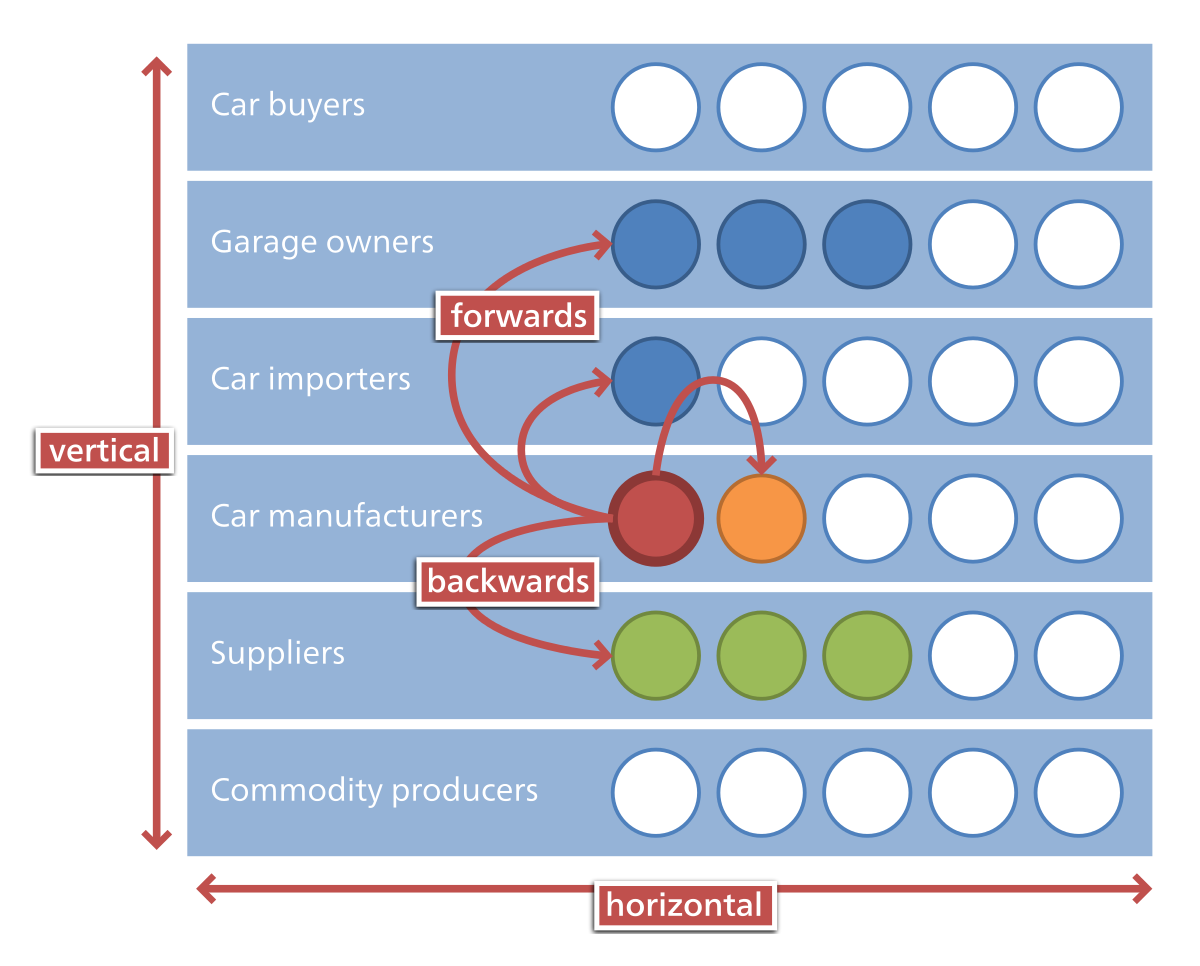The dark side of vertical integration – StartupSmart

Recently, your humble correspondent looked at vertically integrated companies.
But if you’re just starting a business, the chances are you will – at least initially – be focused on a single stage of production, dealing with companies that are far more vertically integrated than you are.
Well, as Old Taskmaster says, business is war. The dark side of vertical integration comes when someone else tries to take your businesses out of the supply chain.
It happens. Just think about all the small businesses that supplied specialty foods to Coles and Woolies, only to find their lines deleted and a generic product taking their shelf space at $1 per litre.
Or, for that matter, the local servo owners who used their local supermarket as a supplier of their convenience store, only to find a shiny new Coles Express or Woolworths Plus Petrol opening down the road.
In theory, the ACCC should do something about it when it happens. In practice, Australia’s competition watchdog is more of a chihuahua.
On the other hand, Apple seems to be doing just fine, despite the fact its vertically integrated arch-rival (Samsung) also supplies a number of key iPhone components, including the processor and display.
And it’s not the first time Apple has found itself in such a predicament. Way back when Steve Jobs and Steve Wozniak were in their parent’s garage, guess who the supplier was for the main processor in the original Apple I and Apple II computers?
It wasn’t Intel. Nor was it Motorola. And ARM didn’t exist yet.
No, Apple’s first computers from the late 1970s were built around an MOS 6502 chip. From Commodore. As in, Jack Tramiel’s Commodore.
A number of their competitors did likewise, including Atari (including the 2600), the original Nintendo NES and Acorn (who built the BBC Micro B). All used a variation of the processor in the Commodore 64.
When Tramiel started a price war by dropping the retail price of the Commodore 64, all of those companies were left buying processors at retail price while Commodore was effectively buying them at cost price.
Jobs actually referenced the industry shakeout that resulted while unveiling the Macintosh: “Nineteen eighty three… The shakeout is in full swing. The first major firm goes bankrupt, with others teetering on the brink. Total industry losses for ’83 outshadow the combined profits for Apple and IBM, for personal computers.”
So what can you do when a key supplier or customer decides to compete against you?
Apple survived by marketing premium, value-added products. Premium products command premium prices, and are less susceptible to a price war. After all, you might build your own computer, but it won’t be an Apple.
In the long run, Jobs also built his own vertical integration. That’s why you can buy Apple’s Final Cut Pro for your Apple Mac from an Apple store.
Perhaps the best response is to avoid getting locked into a single supplier in the first place. Look for products where you can get a second source – that is, a second company that can competitively supply you a similar product.
Likewise, avoid getting yourself in a position where your entire business is locked into supplying a single customer or outlet. After all, there’s no use crying over spilled, non-generic milk.
Finally, the next time you revise your long-term strategy, evaluate what would happen if your largest supplier, business partner or customer decided to compete with you. Is there a risk? If so, what would you do?
Old Taskmaster says it’s time to evaluate the risks facing your business from potential rivals – and reduce them!
Get it done – today!

